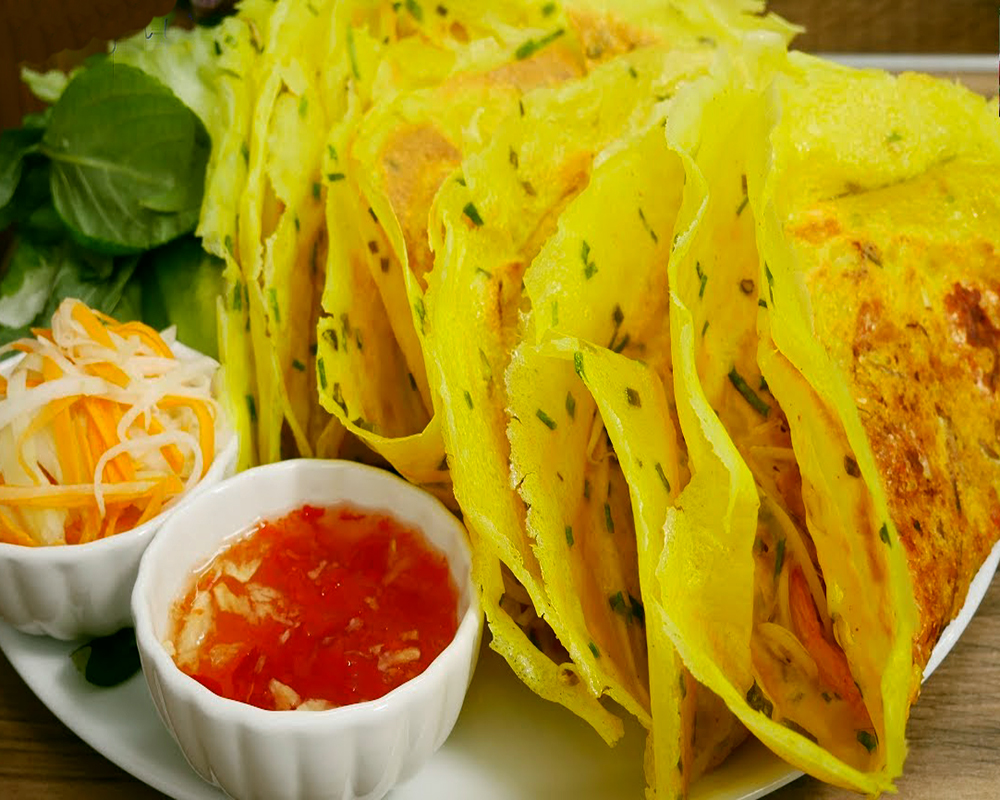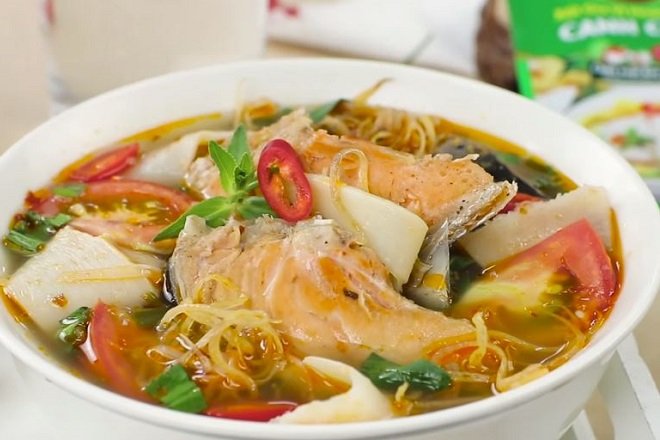Why is Mekong Delta Food so diverse?
- Abundant ingredients: The Delta’s unique ecosystem provides a wide variety of fresh produce, seafood, and livestock.
- Cultural melting pot: Over centuries, the region has absorbed culinary influences from various cultures, creating a unique blend of flavors.
- Tropical climate: The hot and humid weather supports the cultivation of a vast array of tropical fruits and vegetables.
Key characteristics of Mekong Delta Food
- Fresh seafood: With its extensive river system, the Delta offers an abundance of fresh fish, shrimp, crab, and other aquatic delicacies.
- Fresh produce: The region is renowned for its tropical fruits, such as durian, mango, and dragon fruit, as well as a variety of fresh vegetables.
- Home-style cooking: Mekong Delta food emphasizes simple, flavorful dishes that highlight the natural taste of the ingredients.
- Rice-based dishes: As a major rice-producing region, rice is a staple food, used in numerous dishes.
Must-try Mekong Delta Food
The diversity of food in Mekong Delta is a fantastic way to experience vibrant culinary traditions of the Mekong Delta region in Vietnam.Freshwater Fish and Seafood:
- Elephant Ear Fish: Often fried and served with rice paper, herbs, and dipping sauce, this is a local delicacy.
- Catfish: Commonly used in dishes like “canh chua” (sour fish soup) and grilled preparations.
- River Shrimp and Crabs: These are often featured in stir-fries, soups, and curries.

Elephant Ear Fish
Soups and Stews
- Sour Fish Soup: One of the local favorite is Sour Fish Soup. This beloved dish features a tangy, sweet-sour broth made with fish, pineapple, tomatoes, and tamarind, often garnished with fresh herbs like Vietnamese coriander. It captures the essence of Mekong Delta foods and is a staple in many local households.
- Noodle Soup: A noodle soup that can be made with a variety of ingredients such as seafood, pork, or beef, often served with a clear broth and fresh vegetables
 Noodle Soup
Noodle Soup
Noodle Dishes
- Noddles: Thick noodles served in a rich, flavorful broth with various toppings like shrimp, pork, or fish.
- Crispy pancakes: Crispy Vietnamese pancakes filled with shrimp, pork, and bean sprouts, often served with fresh herbs and dipping sauce.

Crispy pancakes
Fruits and Vegetables
This region is a true paradise for food lovers and anyone seeking a taste of authentic Vietnamese cuisine.A Fruit and Vegetable Paradise: The Mekong Delta
The Mekong Delta is renowned for its lush greenery and fertile lands, which produce an abundance of tropical fruits and fresh vegetables. The region is known for its tropical fruits like dragon fruit, rambutan, mangosteen, and jackfruit. This region is a true paradise for food lovers and anyone seeking a taste of authentic Vietnamese cuisine.
The Mekong Delta’s warm, humid climate is perfect for cultivating a wide variety of tropical fruits. Some of the most iconic include:
- Durian: Often called the “king of fruits,” durian is a divisive but beloved fruit with a strong, pungent odor and creamy texture
- Mango: Sweet, juicy, and refreshing, mangoes come in various types.
- Dragon fruit: With its vibrant pink or yellow skin and white or red flesh, dragon fruit is both visually appealing and delicious.
- Rambutan: This hairy fruit has not only a sweet, juicy flesh but it is also a popular snack.
- Jackfruit: The world’s largest tree-borne fruit, jackfruit can be eaten ripe or unripe and is often used in savory dishes.
- Pomelo: This large citrus fruit is similar to grapefruit but sweeter and less tart.
- Star apple: With its unique star-shaped interior, star apples are sweet and refreshing.
- Watermelon: A classic summer fruit, watermelons are juicy and hydrating.
Fresh and Flavorful: Mekong Delta Vegetables
The Delta’s rich soil and abundant water supply create ideal conditions for growing a variety of fresh vegetables. Some of the most common include:
- Water spinach: A versatile green used in stir-fries, soups, and salads.
- Morning glory: Similar to water spinach but with a slightly different flavor.
- Bitter melon: A bitter but healthy vegetable often used in soups and stir-fries.
- Okra: A slimy vegetable with a unique texture, often used in stews and curries.
- Lotus root: The crunchy root of the lotus plant, often used in soups and stir-fries.
- Watercress: A peppery green often added to salads or used as a garnish.
Desserts
- Sweet dessert soup: A sweet dessert soup made with a variety of ingredients like beans, fruits, and coconut milk.
- Caramel custard: Vietnamese-style caramel custard, often served as a dessert.
Exploring Mekong Delta Food with essential tips
To explore Mekong Delta food effectively, keep these tips in mind:- Try Local Markets: Visit floating and traditional markets to taste fresh, authentic dishes and ingredients.
- Be Adventurous: Don’t shy away from unique offerings like fermented fish sauce or snake meat.
- Learn Local Etiquette: Observe local dining customs, such as using chopsticks and sharing dishes.
- Ask for Recommendations: Locals can guide you to the best eateries and hidden gems.
- Sample Street Food: Street vendors often serve some of the most authentic and delicious Mekong dishes.
- Participate in Cooking Classes: Gain hands-on experience and learn to recreate Mekong dishes at home.
- Stay Hydrated: The spicy and flavorful dishes can be intense, so keep water handy.

 Noodle Soup
Noodle Soup